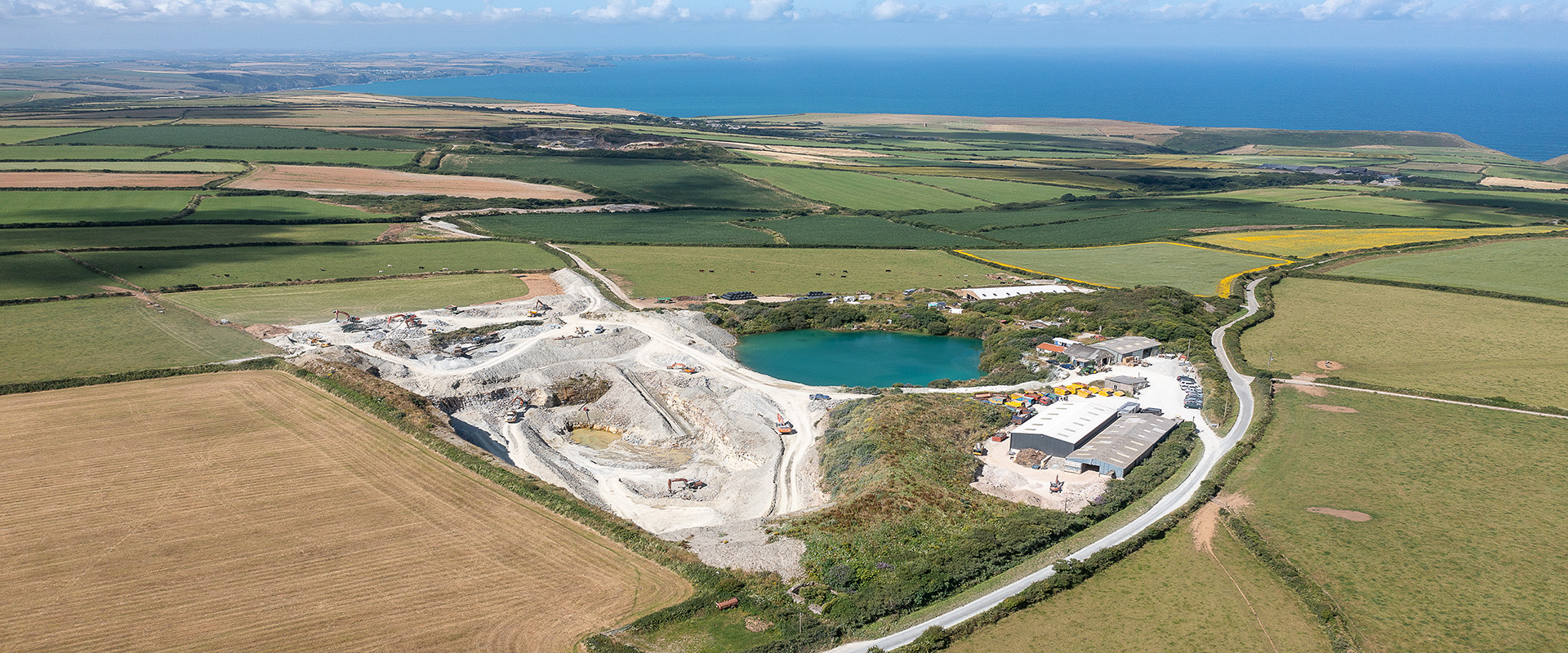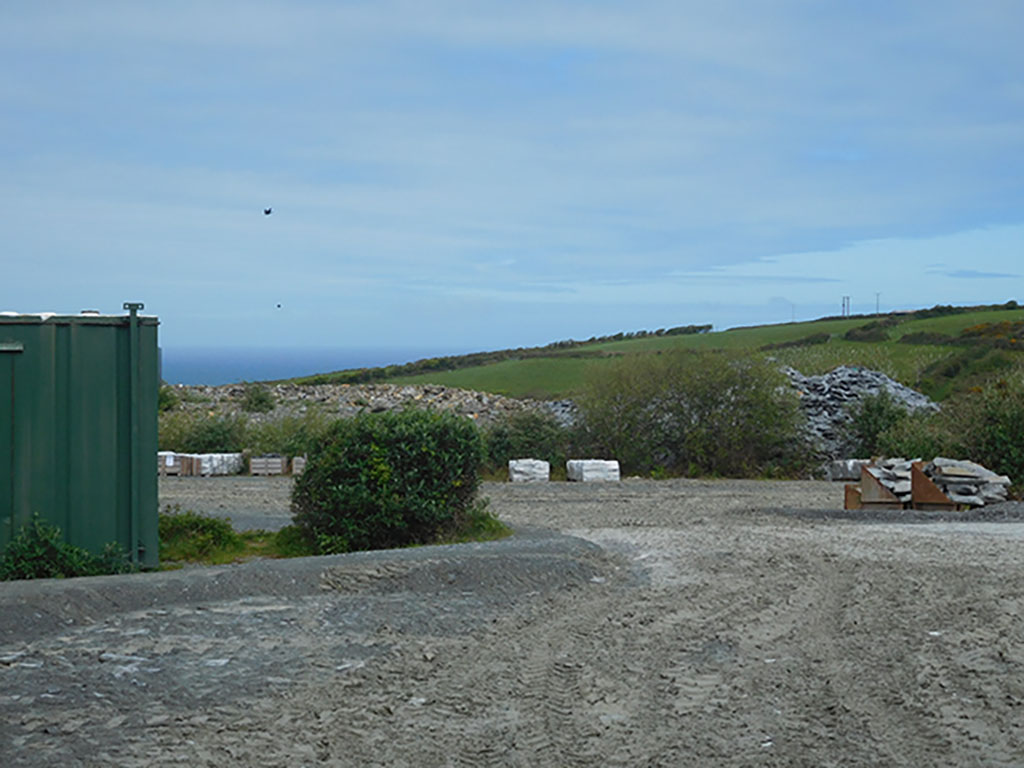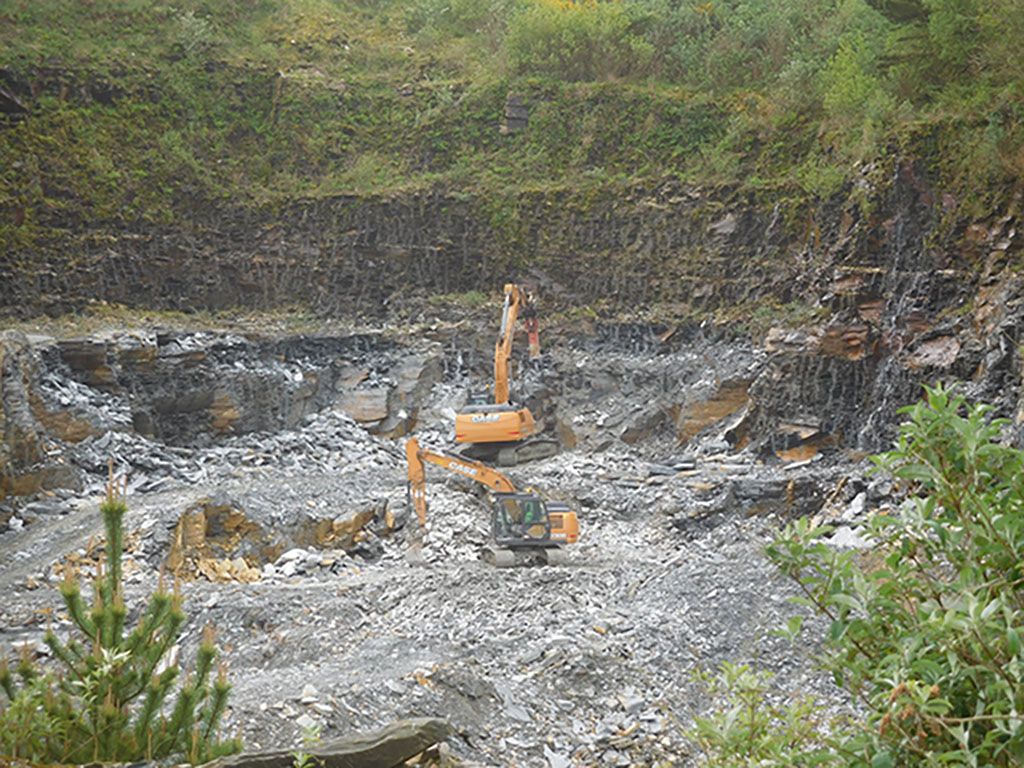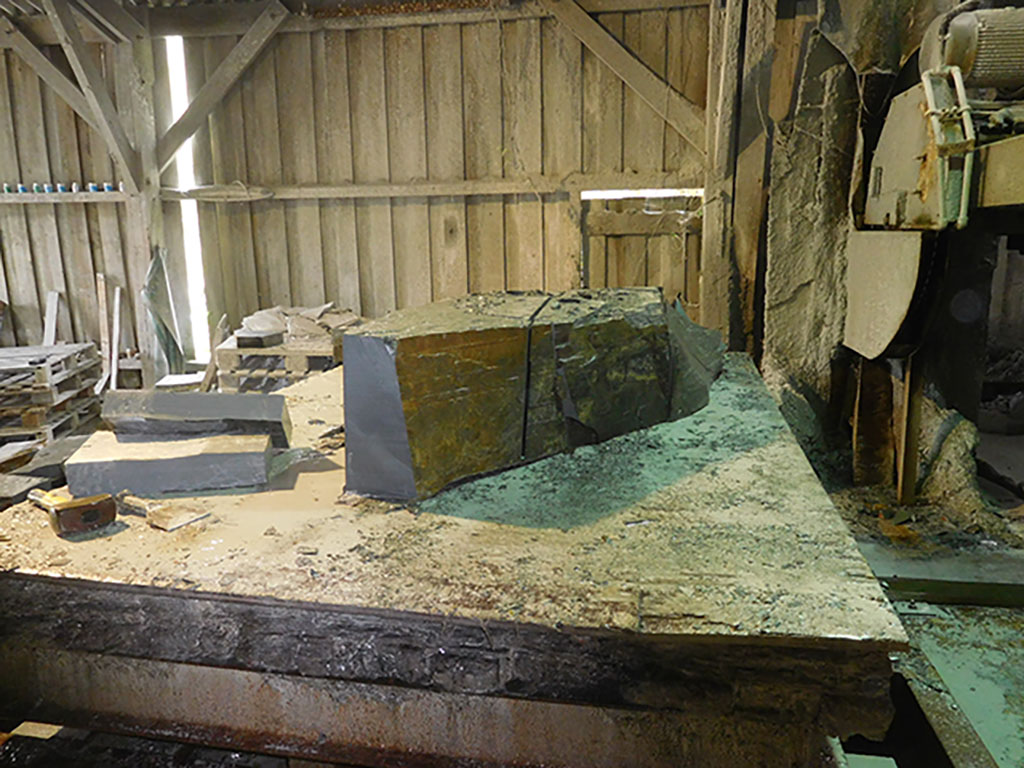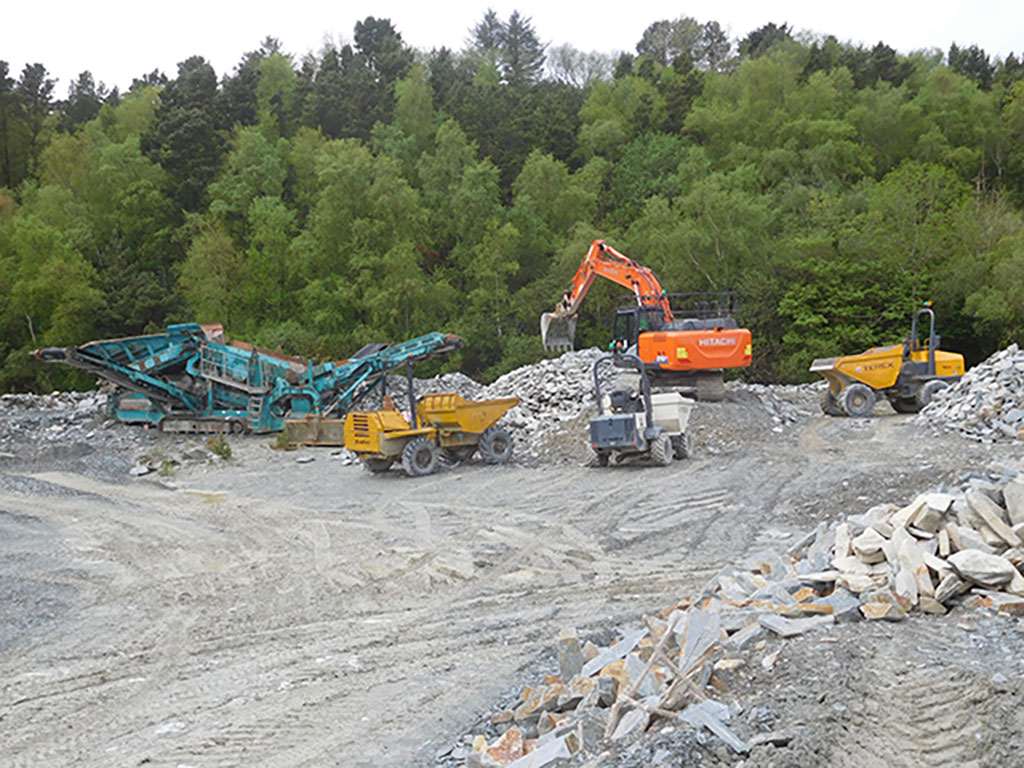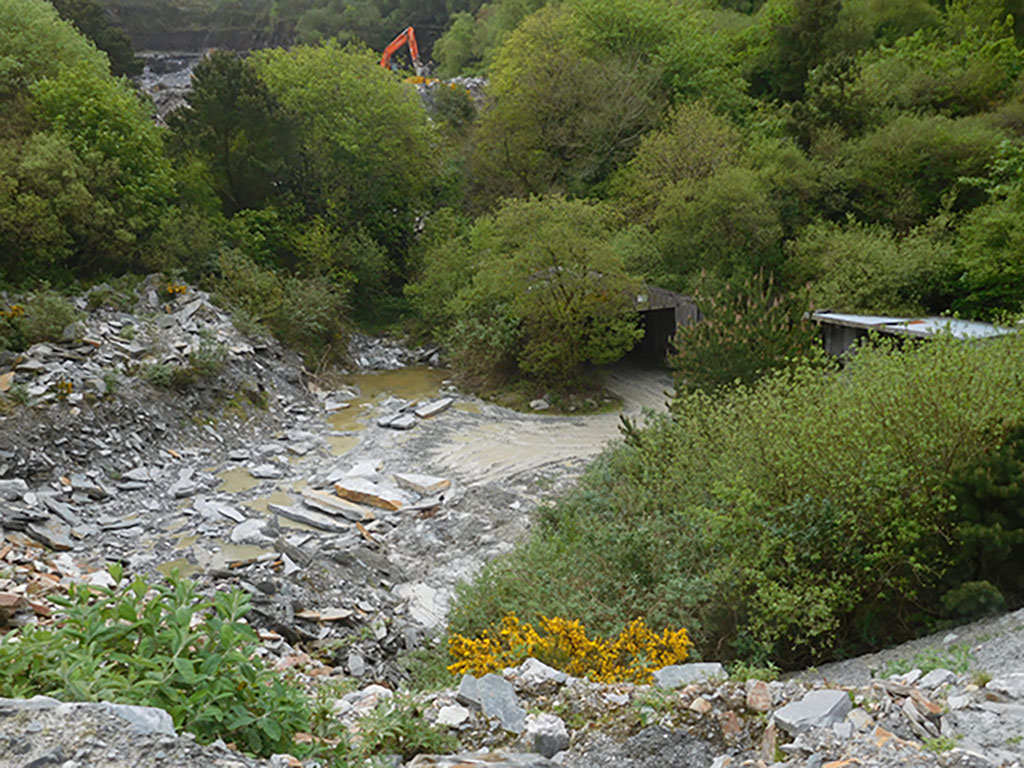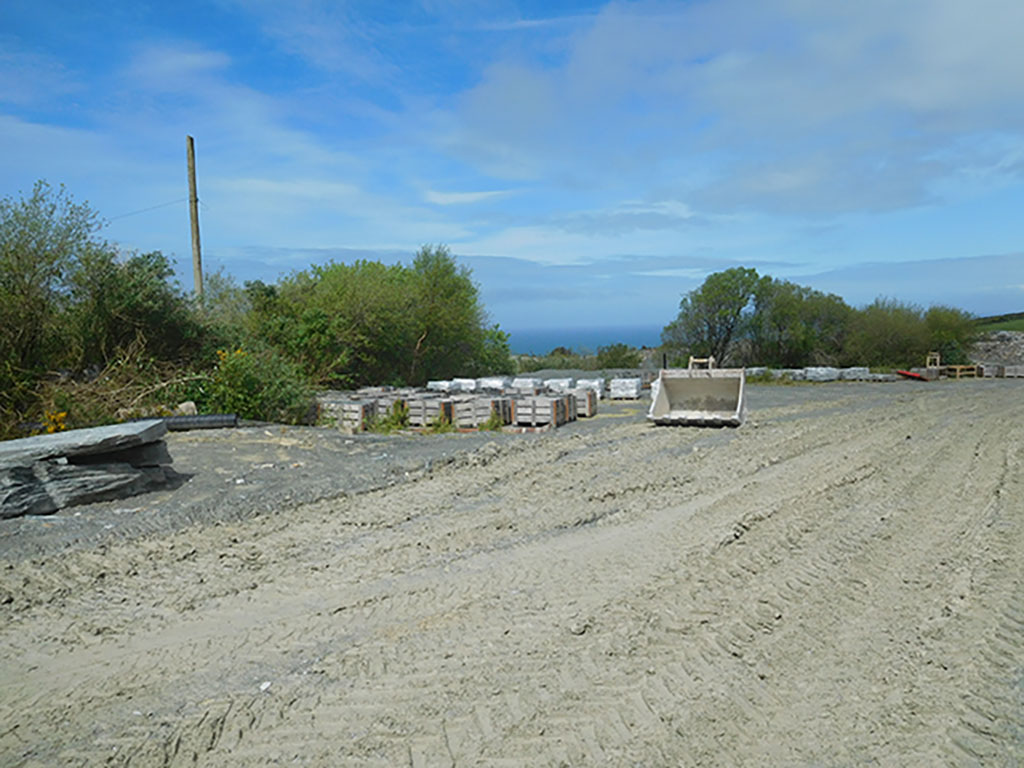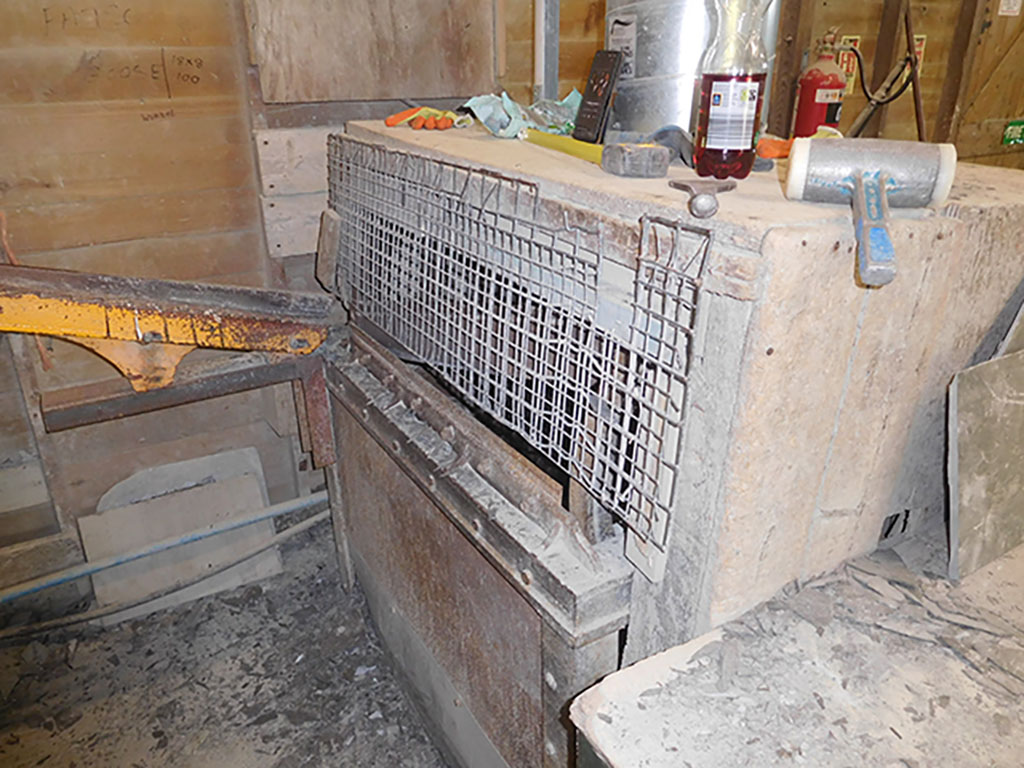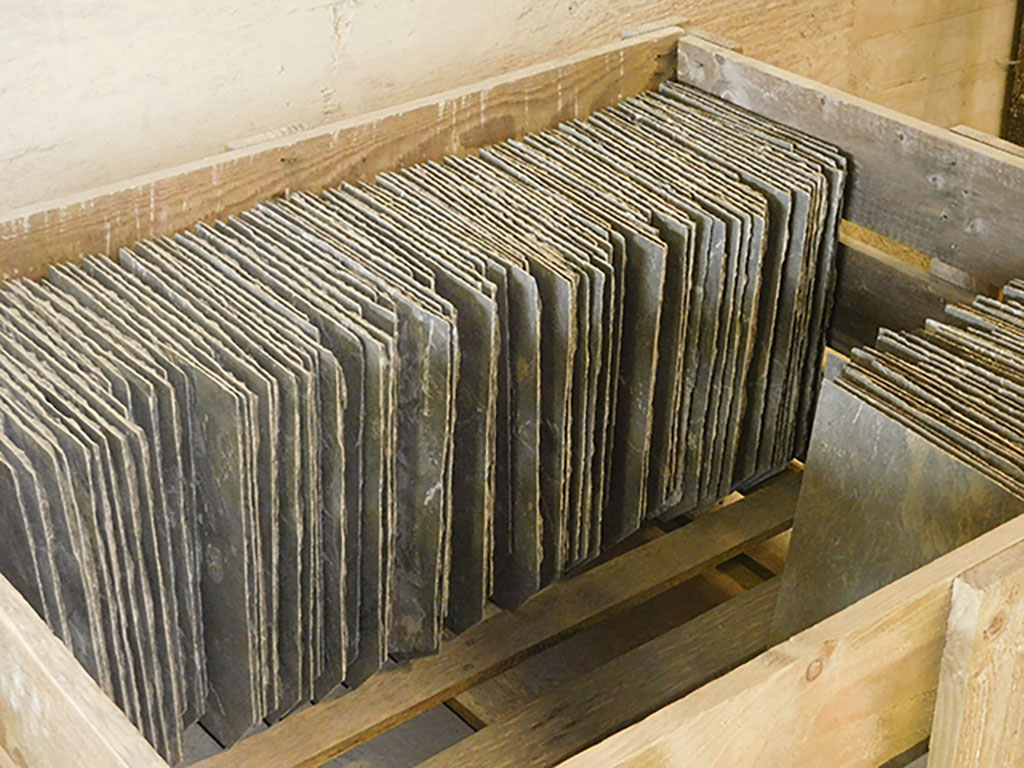On the 10th May 2023 I had the opportunity to escape from my desk at Trebarwith Road & go on a little field trip to Trevillett Quarry.
Arriving in the sunshine it was clear to see that the layout of the quarry was quite different from what I have grown used to at Trebarwith Road & it was going to enjoyable to explore around to see where all the different operations take place.
Having parked up outside the office we walked over to the west extent of the site where the machines are working on the rock face. Whist the initial stage of breaking out from the rock face is carried out in much the same way as I have seen at Trebarwith Road quarry the judgement of the stone is quite different. Here the first selection is not what is the best stone for cutting down to facing stone, but instead selecting the pieces which have the qualities to become blocks ready for becoming roofing slate.
These large blocks are taken off to the largest saw on site housed in its own not so little shed. Now the skills & knowledge of the saw operator come into play in order to make the most out of each piece they have been given. Cutting in the wrong direction or dimensions can be a disaster. Once the blocks have been cut, they can be transported up to the splitting shed for there amazing transformation into roofing slates. However, I notice that there is a need to keep the stone blocks damp so as to prevent them from drying out & presumably splitting before the right time or in the right place.
Many of the main buildings are located in the upper area of the site. These consist of the office, weighbridge, saw shed, splitting shed & dressing shed. As well as the crib room & other staff facilities needed to keep everyone safe & well. Occasionally even happy!
Entering into the splitting shed I’m amazed by the scale of it as much as with the organisation at each working station. Each man is seated against the wall of the shed surrounded by the stone he is working on as well as the tools needed for each step undertaken. In addition, by each work station is an extraction pipe which removes the dust away from the worker. Ear protection is essential for each individual as the constant hammering all day is surprisingly loud. Some elect for over the ear protection whist other select the in-ear choice, others listen to music to distract themselves from the noise & Cancel it out. Each piece of stone is studied & turned around before the first hammer & chisel is brought down on it. There skills are amazing to watch as each block is separated out into its layers to be refined into roofing slates. Any loose elements are knocked away from the surface before they are set to one side ready to be moved on to the next stage. Understandably not every one makes the grade & these are set to one side for later processing. I don’t know how long it takes to train but one day I would to sit in one of those seats & have a lesson on splitting.
The other shed next door houses the clipper machines which trim off the corners of the roofing slates ready for them to packed & crated ready for delivery to deserving customers. At this stage they are graded & checked over for size & quality. Before we took over Trevillett Quarry I confess to not really looking at slate roofs but as we have begun to understand more, they have gained more respect in terms of skill & beauty. Some of the oldest roofs have been there for hundreds of years with very little maintenance.
Also, on this level are two of the saws for cutting the facing stone, separating them out into Blue/grey colour & Rustic red/orange colour. Once cut they are carefully stacked onto pallets & wrapped with plastic ready for delivery. Some are squared off on the ends to make single or double quoins for the corners of buildings or around the windows. Whist watching the stone come through the saw another load arrives from the machines doing the sorting & picking on the other side of the clearing above the quarry pit. Dumpers run about the site most of the day bringing the stone to the saw sheds, taking away the waste etc.


